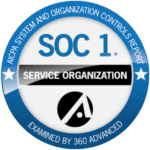Navigating the world of international shipping is much like performing a high-stakes logistics ballet, but instead of pirouettes, you’re grappling with documents needed for international shipping. These seemingly innocuous pieces of paper can make or break your logistics success, transforming a straightforward freight operation into a global maze of compliance requirements. When a single missed Bill of Lading (BOL) leads to a missed port window, you learn quickly the true cost of disorganized documentation.
Documents serve as the linchpin connecting every stage of international shipments—from customs clearance to final delivery. Without the right paperwork, freight coordinators risk significant delays, unwelcome fines, or even lost cargo. While each document serves a specific purpose, understanding which ones are essential can demystify the often convoluted world of global trade. Imagine your shipment is the star of a Broadway show, and the documentation is the script; without it, chaos reigns.
In this article, we’ll uncover the comprehensive list of essential shipping documents, diving deep into their roles and requirements. From the ubiquitous Commercial Invoice to intricate compliance forms like the Shipper’s Export Declaration, we’ll ensure you catch every crucial detail. By highlighting best practices—including logistics support strategies for mitigating paperwork pandemonium—we’ll guide you towards transforming your shipping documentation from a potential showstopper into a well-rehearsed symphony.
Understanding the Importance of Documentation in International Shipping
Understanding the importance of documentation in international shipping is crucial for logistics managers, procurement directors, customs compliance officers, and freight coordinators. The cornerstone of smooth international shipments lies in the meticulous preparation of essential paperwork. From the commercial invoice to the certificate of origin, each document plays a vital role in ensuring compliance, avoiding delays, and facilitating hassle-free movement across borders.
When documents are not in order, the results can be costly. Take, for instance, a bill of lading (BOL) delay, which can easily result in a missed port window, leading to additional demurrage charges or even shipment re-routing. It’s akin to learning quantum physics—complex and frustrating when the documentation requirements differ wildly between countries.
Table: Essential Shipping Documents
Document Name | Who Issues It | Why It’s Required | Where It Goes |
|---|---|---|---|
Commercial Invoice | Seller | Proves sale; required for customs | Buyer, Customs |
Bill of Lading | Carrier | Title to goods; contract of carriage | Shipper, Consignee |
Certificate of Origin | Chamber of Commerce | Confirms goods’ origin; trade terms | Customs, Buyer |
Leveraging expert logistics support from trusted partners like Hatfield & Associates ensures document compliance and enhances freight coordination. For more insights, refer to our comprehensive resource on logistics support.
Essential Shipping Documents
In the realm of international shipping, where supply chains intertwine across continents, the importance of documentation cannot be underestimated. Essential shipping documents serve as the backbone of global trade, ensuring the smooth transit of goods while maintaining compliance with various international regulations. These documents are the bridge connecting sellers, carriers, and buyers, playing a pivotal role in preventing costly delays and entanglements at customs. No one relishes the thought of their shipment languishing at customs due to missing paperwork. From commercial invoices to certificates of origin, each document has its unique purpose and significance, making it indispensable in the logistics ecosystem.
Commercial Invoice
A commercial invoice is often considered the heart of international trade transactions. This crucial document is issued by the seller and provides a detailed account of the goods being sold, specifying the value, description, and terms of sale. The commercial invoice is not merely a receipt; it acts as a testament to the transaction and is required by customs authorities to assess import duties and taxes. Inaccuracies in this document can lead to miscalculations of duties, resulting in either overpayment or penalties. Typically addressed to the buyer and customs, it serves as the foundation for other shipping documents such as the packing list and proforma invoice. Imagine a customs official attempting to decode an unclear invoice – it could lead to endless back-and-forths, reminiscent of a diplomatic puzzle that nobody wants to solve.
Proforma Invoice
The proforma invoice plays a preliminary role in the international shipping process. Issued before the actual transaction occurs, it provides a formal quotation to the buyer detailing the expected costs. While not used for accounting purposes, it delineates the products, prices, and specifications, offering transparency to the buyer before a purchase order is placed. The proforma invoice serves as a negotiation tool that aids in securing agreements between parties. It also assists in getting governmental approvals for foreign exchange or import licenses.Though not binding, it’s an essential preparatory document, especially in negotiations, adding a layer of clarity that can prevent misunderstandings before the sale is finalized. Much like a well-rehearsed script, the proforma invoice sets the stage for a smooth performance in the international trade arena.
Bill of Lading (BOL)
The Bill of Lading (BOL) is often dubbed the king of all shipping documents, and for good reason. As a legal contract between the shipper and carrier, it outlines the terms for transporting goods and provides proof of receipt. The BOL is indispensable for the consignee as it grants the right to claim the goods upon arrival. Imagine a scenario where a BOL error leads to missing a port window, thrusting your shipment into a logistical abyss and racking up demurrage charges. This document not only details the nature and quantity of the cargo but also acts as a title of ownership. Different forms of BOLs exist, such as the straight bill of lading for non-negotiable shipments or the order bill, which allows the goods to be transferred to third parties. Regardless of type, the BOL is the transport sector’s most trusted document, ensuring the shipment’s secure transit and delivery.
Air Waybill and Ocean Bill of Lading
When it comes to shipping goods by air or sea, the modes of freight transportation each have their designated form of a bill: the air waybill and ocean bill of lading. Both documents serve as carriage contracts but differ in their formality and usage.
Air Waybill: Generated by air carriers, this non-negotiable document functions as a contract of carriage and a shipment receipt. It accompanies all air freight shipments and provides tracking information, enabling both sender and receiver to monitor the consignment’s progress.
Ocean Bill of Lading: More intricate than its airborne cousin, the ocean bill of lading acts not only as a shipping contract and receipt but also as a document of title, making it negotiable. This flexibility enables transfer or sale of the shipment while in transit, a feature coveted in complex multinational trade deals.
Each document caters to its respective logistics mode, ensuring the right protocols are observed for the secure transit of goods across the globe. In the air, the focus is immediacy and clarity, while at sea, the emphasis is on flexibility and legal security.
Certificates of Origin
Certificates of origin have a fundamental role in validating the origins of goods being traded internationally. These documents attest to the country where the goods were produced, supporting claims of nationality and impacting the preferential tariffs or duties the shipment expects to receive. Issued predominantly by local chambers of commerce, certificates of origin facilitate the understanding of trade agreements and are pivotal for customs clearance. Incorrect declarations might lead to higher duty costs or even the seizure of goods. In today’s interconnected world, such certificates are not merely formalities; they stand as the bulwark against potential trade disputes, ensuring that goods receive the treatment they deserve based on their origin. Therefore, maintaining accuracy in these certifications is crucial for seamless customs negotiations and for tapping into tariff benefits.
Focusing on correct and timely documentation can significantly reduce complexities in international shipping, allowing logistics professionals to concentrate on optimizing other facets of supply chain management. Partnering with experts like Hatfield & Associates can be a game-changer. They stand as a reliable ally, helping logistics managers, procurement directors, and customs compliance officers navigate the labyrinth of shipping documentation with precision and ease. For further insights, explore their stellar logistics support strategies that can streamline your freight operations.
Documentation for Hazardous Materials
In the intricate world of international shipping, ensuring that hazardous materials reach their destination safely requires meticulous attention to documentation. The paperwork labyrinth can make even the most seasoned logistics manager question their sanity, but proper documentation is essential to prevent delays and avoid potential legal ramifications. What’s more, ensuring compliance with both international and local regulations is paramount. The cornerstone of hazardous material shipping documentation includes Safety Data Sheets (SDS) and Dangerous Goods Forms, key components of a sophisticated yet necessary compliance process.
Safety Data Sheets (SDS)
Safety Data Sheets (SDS) serve as the critical communication medium for conveying information on hazardous substances. SDSs are more detailed than your mother’s apple pie recipe, providing essential details that ensure safe handling, storage, and transport of hazardous materials. This document is typically issued by the manufacturer and gives a comprehensive overview of the physical, chemical, and toxicological properties of a material. Each SDS is designed to inform various stakeholders—from logistics managers to customs officials—of potential dangers.
Accurate SDS documentation is crucial for customs clearance and legal compliance. It not only helps prevent accidents during shipping but also plays a fundamental role during emergency response scenarios. Inconsistent SDS information can lead to stopped shipments and missed deadlines. For example, imagine a situation where a shipment is delayed due to discrepancies in hazard classifications, causing a ripple effect of scheduling nightmares—a scenario logistics professionals aim to avoid.
Dangerous Goods Forms
The maze of dangerous goods forms evolves constantly, and it’s every logistics manager’s dream to master the paperwork. These forms, issued by the freight forwarder, detail the specifics of hazardous materials being shipped. They include classification, packaging, labeling, and documentation in compliance with international guidelines such as those set by the International Air Transport Association (IATA) and the International Maritime Organization (IMO).
Clear and precise dangerous goods forms are essential to catch a freight coordinator’s keen eye. These documents are indispensable when it comes to logistics support, ensuring the ship sails smoothly through customs and reaches its dock without incident. Without the correct forms, hazardous materials risk being stuck in limbo, much like a ship doomed to eternally circle the Sargasso Sea—not exactly the outcome desired when deadlines loom.
In summary, managing the documentation for hazardous materials is no small feat. However, by staying current with SDS and Dangerous Goods Forms, logistics managers can smoothly navigate the challenges posed by international shipping regulations. Organizations like Hatfield & Associates offer strong logistics support, employing proactive document management to streamline freight movement, remove compliance headaches, and ensure that hazardous shipments reach their destinations safely and efficiently. For more insights, customs professionals often turn to trusted government resources such as the U.S. Customs and Border Protection for guidance on fulfilling their shipping documentation requirements.
Financial and Payment Documents
In the realm of international shipping, financial and payment documents are akin to the life jackets that keep freight transactions afloat. These meticulously crafted documents are pivotal in ensuring smooth fiscal exchanges and maintaining trust between buyers and sellers across continents. They contain essential details about the monetary side of transactions, delineating responsibilities and securing payments against performance standards. By following regulated norms, these documents prevent misunderstandings that could otherwise lead to disputes or financial losses. Their role in international trade underscores the importance of precise information relay—a task not unlike walking a tightrope, where balance and accuracy are key.
Letter of Credit
A Letter of Credit is a linchpin in international trade, acting as a financial assurance from a buyer’s bank to the seller. This document stipulates that the payment will be made upon receipt of the specified goods or services, provided the terms detailed in the letter are met. This financial instrument offers security and confidence to both parties involved, confirming that the seller will receive payment and the buyer will get what they have paid for.
In practice, a Letter of Credit can mitigate risks—especially those associated with international transactions—by shifting the creditworthiness from the exporter to the issuing bank. For example, a Chinese manufacturer shipping electronics to a U.S. retailer may require a Letter of Credit for assurance against unexpected financial barriers. This safety net is particularly valuable in unfamiliar markets, where international trade dynamics are not always predictable.
The complexity of a Letter of Credit often matches its significance. Any discrepancies or missed deadlines in document presentation can transform a simple transaction into a financial quagmire, reminiscent of a tangled legal drama where every word counts. Nonetheless, when meticulously managed, a Letter of Credit can serve as an unyielding anchor in the turbulent waters of global trade.
Shipper’s Letter of Instruction (SLI)
The Shipper’s Letter of Instruction (SLI) is a vital document in the transportation of goods, serving as a communication tool between the shipper and the freight forwarder. This document details shipping requirements and provides essential instructions on logistics operations. It’s not merely a formality; the SLI is crucial for ensuring that shipments are handled according to the shipper’s specifications.
The SLI typically includes information about the consignee, the origin and destination of the goods, and specific shipping instructions. For instance, when transporting delicate electronics, a shipper might use the SLI to specify requirements for climate-controlled environments—a bit like sending a gourmet soufflé through a snowstorm without letting it deflate. Not adhering to these instructions could result in hefty financial losses or, at the very least, some less-than-pleased clients.
Addressing potential concerns before shipping, an accurately prepared SLI can smooth over logistics hurdles that often accompany international transport. By communicating clearly with all parties involved, this document aids in reducing customs delays and ensures compliance with the varying demands of global shipping routes. A well-prepared SLI can therefore save time and foster efficiency, much like having a seasoned translator guide you through an intricate negotiation in a foreign language.
Writing these documents with due diligence and accuracy can save businesses from costly errors and expedite the entire shipping process, further supporting the roles of logistics managers and freight coordinators in orchestrating seamless international operations.
Compliance and Regulatory Documents
Navigating the labyrinthine world of international shipping requires a meticulous understanding of compliance and regulatory documents. These documents not only ensure adherence to global trade laws but also facilitate smooth customs clearance and minimize delays—a non-negotiable for logistics managers and customs compliance officers. Missing or incorrect documentation can create cascading disruptions, turning your beautifully orchestrated supply chain into a logistical horror show reminiscent of misplacing a Bill of Lading (BOL) right before a critical port window closes.
Export Declarations
The first step in the export process is often ensuring proper export declarations are made. The Shipper’s Export Declaration (SED) is a key document that provides information to the government regarding the type and quantity of commodities being shipped. Prepared by the shipper, this document is critical for export compliance and tracking U.S. exports. Failing to file an accurate SED in a timely manner could result in shipments being delayed or, worse, hefty fines imposed by customs authorities.
Export declarations are more than just bureaucratic necessities; they serve as the linchpin for export data collection, providing statistical information that influences international trade policies. They facilitate transparency and help governments monitor and control exports of sensitive goods, whether to meet national security considerations or to support economic policy objectives.
Export Licenses
When exporting goods, it’s imperative to determine if an Export License is required. This license grants permission to ship goods where the exporting country exercises control over specific products, such as dual-use items that have both civilian and military applications. Obtaining this license requires rigorous checks and balances, including verification through designated government bodies.
Securing an Export License ensures compliance with the export regulations of the origin country and prevents legal ramifications. Without it, an attempt to ship controlled goods can result in severe penalties, not to mention a delay in shipment equivalent to a logistics nightmare worthy of Kafka. Exporters should regularly consult relevant government portals or trusted logistics partners to stay updated on which goods require such licenses, as this can change based on international treaties or national security needs.
Import Licenses
Import Licenses are the counterpart to Export Licenses, required by the importing country to allow specific goods across its borders. These licenses help regulate imports that may affect domestic industry by controlling the volume and type of imported goods. For logistics managers, this means staying vigilant and informed about the often intricate web of import regulations for each target market.
A well-prepared Import License application facilitates uninterrupted shipment clearance, avoiding the quagmire of goods stranded in customs due to compliance snafus. Given the dynamic nature of global markets and shifting trade policies, maintaining a robust database of current import requirements ensures smoother operations, mirroring a maestro’s skill in leading a symphonic performance devoid of missed cues.
Automated Export System (AES) Filing
AES Filing has transformed the way U.S. exports are documented, serving as an electronic gateway for the submission of export information. The AES, maintained by the U.S. Census Bureau, is the primary tool for enforcing export compliance and collecting valuable trade data. Utilizing this system not only ensures adherence to regulatory standards but also speeds up the documentation process for freight coordinators.
Quaintly user-friendly (if you’ve spent enough hours understanding its intricacies), AES Filing ties directly into broader compliance efforts, preventing shipping errors and curbing potential fines associated with late or incorrect reporting. It exemplifies the value of streamlining document management—a hallmark of any seasoned logistics manager’s toolkit. Adopting efficient practices, like leveraging AES, can mean the difference between holding up the trade of nations and watching cargo containers gather dust at port.
For more insights on international shipping documentation, visit the U.S. Customs and Border Protection website. For those harried with perpetual logistics woes, Hatfield & Associates offers invaluable logistics support, ensuring shipments sail through the procedural shoals with nary a hitch in sight. In an industry where compliance is king, seamless documentation links every part of the supply chain, reinforcing fluidity and precision in global trade.
Customs Documentation
Navigating the labyrinth of international shipping requires a thorough understanding of documents needed for international shipping. These documents are not just pieces of paper—in the world of logistics, they are passports for freight. Their accuracy, timeliness, and completeness are pivotal in ensuring that shipments not only leave on time but also reach their destination without a hitch. An understanding of these documents could mean the difference between seamless customs clearance and a frustrating delay that leaves your shipment stuck at a port.
Each document serves specific customs, legal, and transport purposes. A single oversight can lead to costly demurrage fees, stockouts, or, as one hapless freight coordinator lamented, watching the shipment miss its port window due to a missing Bill of Lading (BOL). Such scenarios underline how a robust system of document management contributes to the timely clearance of goods, efficient transit, and adherence to all regulatory requirements. Let’s delve into the essentials to ensure your freight lands smoothly every time.
Detailed Customs Forms
Customs documentation encompasses a suite of forms that clearly convey the journey, cargo content, and financial aspects of an international shipment. Among these essential forms, the Commercial Invoice stands out as the most crucial. Issued by the exporter and directed to the importer, this document outlines the transaction details and is a staple for customs clearance. Think of it as the document’s way of saying, “Yes, indeed, I am what I claim to be.”
Another important player in this documentation conga is the Bill of Lading (BOL). Issued by the carrier and conferring to the shipper as a receipt, it’s both a contract and a transfer of ownership. A delay in providing this document can result in your cargo grounded, just like an estranged luggage piece waiting at the lost and found. Moreover, the Certificate of Origin verifies the goods’ origin, helping assess correct duties and taxes. Its absence could similarly spell doom for clearance progression.
Then there’s the Shipper’s Export Declaration (SED), standardized in the Automated Export System (AES), signaling U.S. export compliance. This declaration documents cargo details as they exit U.S. borders. These forms may seem pedantic, but each represents a critical layer of compliance, ensuring smooth navigation from point A to point B.
Importance of Accurate Content Descriptions
Accurate content descriptions are paramount in the realm of customs documentation. Being explicit about your shipment’s contents is not just about avoiding raised eyebrows—it’s about fulfilling legal and commercial obligations. An occasional mishap in specifying goods might seem harmless, but in the world of customs, this could invoke an apocalypse of queries that you’d rather avoid.
Customs authorities, vigilant as they are, rely on content descriptions to categorize goods per the Harmonized System Code, ensuring appropriate tariffs are applied. Incorrect categorizations could lead to unwelcome surprises on your tariff bill. Accurate descriptions ensure timely processing and help identify goods that might fall under restrictions or need special licenses. Inaccurate details combined with inconsistent document requirements between countries can be as irksome and troublesome as trying to solve a Rubik’s Cube blindfolded.
Adding specificity, such as detailing item composition and function, reduces misinterpretation risk and accelerates customs processes. Incorporating words like ‘steel parts for machinery’ instead of just ‘parts’ can hinge your shipment from being a roadblock to rolling through clearance smoothly. Accurate descriptions streamline the paperwork chaos, ensuring your goods transition from documentation to destination efficiently.
For comprehensive logistics support and strategy, and to prevent shipping delays akin to waiting for paint to dry, partnering with seasoned logistics advisors like Hatfield & Associates can be invaluable. Discover more effective strategies to sustain smooth operations by visiting this page on logistics support.
Tips for Ensuring Smooth Documentation Process
International shipping can often feel like navigating a labyrinth of paperwork, where one misstep can lead to delays and additional costs. Ensuring a smooth documentation process is crucial for logistics managers, procurement directors, and freight coordinators to streamline international shipments. Documents needed for international shipping are not just pieces of paper; they are critical components that guarantee the seamless movement of goods across borders. A meticulous approach to managing these documents can make the difference between a shipment slipping smoothly through customs or being stuck at a port, waiting for the correct documentation. By focusing on clear communication and regularly updating your documentation knowledge, you elevate your shipping game and minimize the risk of unexpected hitches.
Maintaining Clear Communication
Clear communication is the unsung hero in logistics—a tool as powerful as any freight transport in ensuring the timely and legal movement of goods. Imagine a shipment delayed because a Bill of Lading (BOL) was not correctly filled out due to misunderstood instructions; this scenario is all too common in the shipping world. To avoid such pitfalls, maintaining open lines of communication among all parties involved—shippers, freight forwarders, customs officials, and receivers—is paramount. Regular updates and discussions about documentation requirements can prevent errors and keep shipments on schedule. Whether your business has direct contact with customs authorities or relies on third-party logistic support, ensuring everyone is on the same page is crucial.
Building strong relationships with partners improves the flow of information and helps address issues as they arise. Proactively confirming document details such as product descriptions, HS Codes, and country of origin minimizes the chances of discrepancies. For instance, defining shipping instructions clearly can ensure that packing lists match physical shipments, smoothing out customs inspections. By prioritizing clear communication, you lay a strong foundation for smooth documentation processes.
Regularly Updating Documentation Knowledge
Staying current with international shipping documentation requirements is akin to updating your GPS before embarking on a road trip—it’s essential for finding the most efficient route. Regulations and documentation demands vary between countries and can change with little notice, leading to potential roadblocks for those unprepared. Regularly updating your knowledge ensures you remain compliant and avoid unnecessary delays or fines that arise from outdated information.
For logistics managers, this means consistently reviewing and understanding key documents such as the Commercial Invoice, Certificate of Origin, and the Shipper’s Export Declaration. It’s like studying for a comprehensive test where the syllabus is always evolving. Monitoring changes from official sources like U.S. Customs and Border Protection or Export.gov can provide invaluable updates. Additionally, leveraging resources from trusted partners like Hatfield & Associates, who specialize in navigating documentation complexities, can keep you informed without the legwork.
Engaging with industry forums and professional networks can also serve as rich sources of insights and updates from peers facing similar challenges. By solidifying your knowledge of documentation requirements, you not only enhance your expertise but also safeguard your shipments against unforeseen compliance issues, fostering a more efficient international shipping process.
Frequently Asked Questions
The most essential documents for international shipping include the Commercial Invoice (detailing the transaction), Bill of Lading or BOL (serving as shipping contract and proof of ownership), Certificate of Origin (verifying product source), Packing List (itemizing shipment contents), and customs declaration forms. Additional documents may include Proforma Invoice, Export/Import Licenses, and Letters of Credit depending on the shipment type and destination. Each document serves specific legal and customs purposes, and missing even one can cause significant delays or penalties.
A Bill of Lading (BOL) is used for ocean freight and serves as a negotiable document of title, meaning ownership can be transferred while goods are in transit. It acts as a receipt, contract of carriage, and title document. An Air Waybill, on the other hand, is used for air freight and is non-negotiable—it cannot be used to transfer ownership. The Air Waybill functions primarily as a shipping contract and receipt, providing tracking information for the consignment. Ocean BOLs offer more flexibility for complex trade deals, while Air Waybills prioritize speed and simplicity.
Hazardous materials require Safety Data Sheets (SDS) that detail the physical, chemical, and toxicological properties of the materials, issued by the manufacturer. Additionally, Dangerous Goods Forms are required, specifying classification, packaging, labeling, and compliance with international guidelines from IATA (air) or IMO (ocean). These documents must be accurate and complete to ensure safe handling, prevent accidents, and comply with international regulations. Incorrect hazardous material documentation can result in shipments being rejected, significant fines, or legal liability in case of incidents.
A Letter of Credit is a financial guarantee issued by the buyer's bank to the seller, ensuring payment upon fulfillment of specified conditions. The bank commits to pay the seller once they present compliant shipping documents proving goods have been shipped as agreed. This protects both parties: sellers are assured of payment regardless of buyer's financial situation, while buyers know payment only occurs when shipment terms are met. The process requires precise documentation—any discrepancies can delay or void payment. It's particularly valuable for new trading relationships or high-value transactions where trust hasn't been established.
Documentation errors can cause serious consequences including customs delays, demurrage charges at ports, shipment rejection, fines, or cargo seizure. Common issues include incorrect product descriptions, mismatched quantities between documents, wrong HS codes, or missing signatures. Even minor discrepancies like typos in company names can trigger holds. Correcting errors often requires amended documentation, which takes time and may incur additional fees. In worst cases, goods may need to be returned to origin or destroyed. This is why meticulous document preparation and verification before shipment is crucial for smooth international trade.
Stay updated by regularly checking official government sources like U.S. Customs and Border Protection and Export.gov for regulatory changes. Subscribe to trade publications and join professional logistics associations for industry updates. Participate in webinars and training sessions focused on international trade compliance. Build relationships with customs brokers and freight forwarders who can alert you to changes. Consider partnering with experienced logistics providers who monitor regulatory changes as part of their service. Maintain a compliance calendar to track when different countries typically update their requirements, and always verify documentation needs before each shipment rather than assuming previous requirements still apply.




